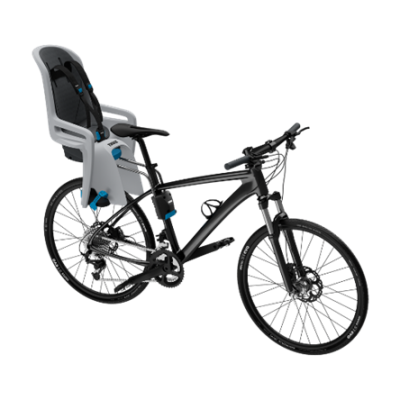- Pediatric Answers
- Posts
- Make Your Kids Use Sunscreen!
Make Your Kids Use Sunscreen!
Sunscreen myths, big savings on acne meds, recall alerts, and steak farts. It's all in this week's newsletter.

This week: I had a cute kid in my office with a wicked sunburn, so this week I’m talking SPF, sunscreen myths, and sunburn treatment not involving old wives’ tales. Plus, how to save a bunch on acne meds (about $132 bucks), two recalls you’ll want to check, and the danger of steak farts, as told by a third-grader.
Premium subscribers get access to everything!

Make Your Kids Wear Sunscreen!
I had a kid come into my office with a bad sunburn. Bad, like, blisters on the shoulders bad. Not only did I worry about how to help this cute kid, but also, do we need to worry about scarring?
So, because July is UV safety month, I thought I’d share the most common questions I get about sunscreen…and what to do if your little one gets a bad burn.
Q: What age can I use sunscreen?
The American Academy of Pediatrics does not recommend the routine use of sunscreen in children younger than 6 months. For kids younger than 6 months, parents should simply keep a child out of the sun as much as possible (using sun protective clothing, beach umbrellas, etc.).
With that said, I always advise parents that I would much rather they apply sunscreen to their 4-month-old’s face if adequate shade is unavailable than risk a sunburn.
Q: What is SPF?
SPF stands for Sun Protection Factor. The SPF is simply a multiplication of the time it would take to burn without sunscreen.
So, if I am fair-skinned and would burn in 10 minutes of being in the sun, adding SPF 15 would theoretically allow me to stay in the sun for 150 mins (10 mins x 15 SPF) before burning.
Using the same example, if I’m dark skinned and won’t burn for 20 mins of sun exposure, then I could theoretically be in the sun 300 mins with SPF 15 (20 mins x 15 SPF).
However…
There are lots of caveats to this system. For example, the SPF number is based on a controlled factory setting where a perfect, thick layer is applied and left alone. Uneven application, sweating, rubbing from clothes, water sports/swimming, etc., can all cause the sunscreen to wear off.
Turns out, factory testing vs. real life isn’t really accurate.
My basic rule of thumb: Use a sunscreen with the highest SPF you can find.
Dermatologists say to use a sunscreen with at least an SPF 15. As a pediatrician, I like at least an SPF 30 for the kids, and reapply frequently (every 1 ½-2 hours).
If you’re curious
The US Food and Drug Administration (FDA) regulates sunscreen products. The official definition (which is basically what I described above) as per the Federal Register 1999: 64: 27666-27963, states that SPF is the dose of Ultraviolet Radiation (UVR) required to produce 1 minimal erythema dose (MED) on protected skin after the application of 2 mg/cm2 of product divided by the UVR required to produce 1 MED on unprotected skin.
It’s a fancy way of saying SPF helps you from getting a sunburn.
Q: What sunscreen product should I use?
Look for sunscreen with the following features:
Is it hypoallergenic? Kids tend to have sensitive skin.
Is waterproof or water resistant?
Does it have a high SPF (greater than 30)?
There are lots of great products out there. For people with sensitive skin or concerns over chemicals in sunscreens, try a “mineral sunscreen.” These have the active ingredients Zinc Oxide or Titanium Dioxide. These create a barrier on the skin which reflect the UV light.
I’ve got a couple kids with eczema at my house, so you’ll usually find products that are geared to sensitive skin in my cupboard, including: Neutrogena, CeraVe, Aveeno, and Cetaphil. You’ll find a combination of sprays and lotions. My kids like their bodies sprayed and their faces creamed. (We often use the Neutrogena spray and lotion sunscreens because I can get them in a pack at Costco and they have a high SPF. But, other brands work as well).

Warning: Do not use any sunscreens with oxybenzone. It can cause allergic reactions in some people and may be an endocrine disruptor, which means it can screw with your hormones.
Q: Does sunscreen expire?
Yes. I know it seems crazy, but sunscreen does expire.
Like any “drug,” it has an active ingredient that over time loses its potency. Every bottle should have an imprinted date on it (usually on the crimped end/edge). Dates on drugs/products regulated by the FDA have a guaranteed potency to that date given regular/appropriate storage (which is supposedly a cool/dry area).
So, drugs kept in a moist/hot bathroom medicine cabinet can actually lose potency earlier than the date. It’s not like the drug suddenly stops working the day of the printed expiration date comes around. It’s just a question of how well the “drug” or product will work after the date.
When you buy sunscreen, look at the date. It may have been sitting on the shelf at the store from the end of last season and it won’t be as effective.
Q: How do I treat a sunburn?
You may have heard some of the old wives’ tales out there about how to properly treat a sunscreen. Here’s the real scoop:
DO’S:
A cool bath or cool, wet washcloth can be soothing.
Keep the skin hydrated with hypoallergenic products (lotions/creams or aloe). Pro tip: put the cream in the fridge first as the cool cream is soothing.
Keep hydrated, drink lots of water
If pain is severe, treat with Motrin (which helps with pain and swelling)
DON’TS:
Don’t pop blisters. They are the body’s way of healing damaged skin and the blister is a good barrier to infection as the new skin underneath heals.
Don’t put butter on the burn. It will trap in heat.

Fact Or Fiction: Sunburns & Clouds
Your son tells you that he doesn’t need sunscreen. It’s cloudy and you can’t get sunburned on cloudy days.

FALSE!
“Even on cloudy days, up to 90% of the sun's rays still can penetrate your skin.” (Mayo Clinic)
Plus, the sun can reflect off of water or snow surfaces.
Moral of the story: Wear sunscreen, rain or shine.

What I’m Seeing at Work: Behavioral Problems
I know it isn’t contagious, but I am seeing a sharp spike in kids with behavioral problems (e.g., temper tantrums, melt downs, fighting with siblings, etc.). I think it’s due to everyone being home for the summer and driving each other crazy.
While some of this is normal, here are a few tips to decrease the severity and frequency (and hopefully get you through the summer with less grief).
SLEEP: Ensure kids get adequate sleep. The days are longer, which means most kids are staying up later. The problem is that they tend to still wake up bright and early with the sun. Invest in some black-out curtains and put your kids to bed earlier. Tired kids are grumpy kids.
SCHEDULE: Part of what makes summer so great is less rigorous schedules and more flexibility. However, many kids do better with a more predictable routine. You may want to modify it for the summer, but create some loose outline to each of the day (e.g., in the morning do breakfast, reading, and help around the house. After lunch, have fun play time).
NUTRITION: During the school year, there are predictable, set meals at certain times. Over-hungry kids are grumpy. Kids who are snacking on junk (that they can easily access during the day because they are home) can also experience blood sugar swings and nutritional deficiencies that add to irritable moods. Try to stick to consistent, healthy meals and snacks.
FUN: While, you do not have to be the continual entertainment for your children (part of summer is kids using their imagination to come up with their own activities), it is fun for kids to have some set things to look for. At our house, it’s “Adventure Tuesday” and “Fun Friday” as these are my days off. We explore what our community has to offer (e.g., hikes to waterfalls, library programs, aquarium, swimming, etc.).


Money Saving Healthcare Hack: Acne Meds
For the treatment of acne, you can now buy over-the-counter medications that were prescription-only until just recently. You can save yourself a trip to the doctor and more expensive prescriptions by knowing what to use. Differin is a keratinolytic medication that works great. Apply it once at night. In the morning use a cream with benzyl peroxide. This will clear up most mild acne and significantly improve most moderate acne.
COST SAVINGS: $132 for the office visit, + cost of prescription med

WWID: Splinter Removal
I often joke that if it weren’t for my profession, we’d be at the doctor’s office weekly with one of our four kids. I use my skills at home all the time. Here, I’ll share a recent example from home and how I handled it, including the products I used. This isn’t an advertisement—I don’t have any financial interest in these products. I simply have parents ask me all the time about what to do in certain situations and the products I use.

Scenario: Last night, after playing in the yard, one of my kids got a large, painful sliver in her foot. She couldn’t walk on it.
What I did:
First, I soaked her foot in a sink full of hot water with about a cup of Epsom Salts for 15 mins. The area around the sliver was quite swollen and really painful, so the soak helped decrease the swelling.
Next, I got my tools. I used a sterile needle I had from work, but a sewing needle wiped with an alcohol swab would have done the trick if I didn’t have that. I also used tweezers that I wiped with an alcohol swab.
The sliver did not have any part sticking out of her foot (it was lodged under the skin), so I could not just grab and pull it out. Instead, I pushed the sliver out by approaching it from the deepest edge. That way I could push it out along the same path that it entered it. Once the edge was out, I could grab it and pull it out the rest of the way. I washed it with soap and water and then applied some antibiotic ointment and covered with a Band-Aid.
This morning, the redness was resolved. All that remains, is a tiny pinpoint hole. She’s running around on it now as I type this. Problem solved!

Recalls & Alerts: Mario Kart & Bike Seats

Funny Things: Steak Farts

I was talking with an elementary-aged child about consuming enough calories to help her gain weight properly when she said:
“Well, I can’t eat steak.”
I asked her why not.
“If I eat steak, then everyone else wants to eat steak and then they’ll all have steak farts. I can’t stand steak farts. It’s disgusting.”
Beware the steak farts, people. They’ll get you.

Legal Disclaimer: The information provided in this article is for educational and informational purposes only. It is not intended as a substitute for professional advice or medical treatment. Always seek the advice of your physician or qualified healthcare provider with any questions you may have regarding a medical condition or the health and welfare of your child. We do not endorse any specific products or brands mentioned in this article. Readers are encouraged to perform their own research and consult with appropriate professionals before making any decisions based on the information provided herein.



